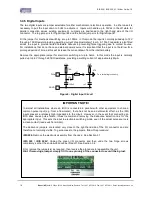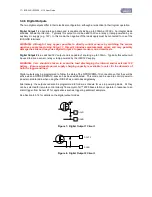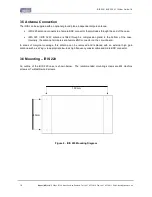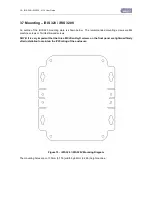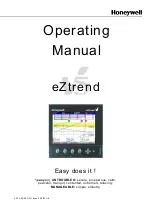
iRIS 220 / iRIS 320, V1.19 User Guide - 12
12
iQuest (NZ) Ltd - PO Box 15169, Hamilton, New Zealand Tel: +64 7 857-0810 Fax: +64 7 857-0811 Email: iquest@iquest.co.nz
2.8.6 Logged Data Array Identification
Each sensor’s logged data is identified by an array ID number. For the primary logged data, the ID is the
sensor number itself. For the optional supplementary data (min/max/deviation/flow), the array ID has an
offset added to the sensor number that it is derived from. These ID offsets are as follows:
Minimum:
+10
Maximum:
+20
Deviation:
+30
Flow Rate
+40
For example, Sensor 4 has been configured to log the average value, plus the maximum and standard
deviation. Three data arrays will be logged for this sensor at each logging interval with IDs of 4, 24 and 34
respectively. In HydroTel™ 2000 these relate to point identifiers of 4/0, 24/0 and 34/0.
2.8.7 Alarm Processing
Each virtual sensor can be checked for two separate alarm conditions. Each alarm has separate trigger and
reset levels, as well as an activation delay or accumulation period depending upon the data type. The alarm
on Sensor 1 can also be used to control the digital outputs. See Sections 3.4.6 and 4.3.12 for further details
on digital outputs.
2.8.8 Real Time Clock & Calendar
The iRIS has a non-volatile real time clock that can be set by the user either through a terminal (RS232 or
UDP) or remotely via proprietary System DO
commands from software such as HydroTel™ 2000 or iLink.
To enable user adjustment to minimise clock drift a menu option is provided to set a compensation offset for
fine control. See Section 4.3.14.
2.8.9 Security
The iRIS 320 can be configured with a PIN code to prevent unauthorised access to restricted information
through the LCD and keypad. This is especially useful when the iRIS 320 is installed in a location where it is
accessible to the general public.
Note: This feature is not available on the iRIS 220 as it has no keypad/LCD interface.
2.8.10 Gateway Communication
The iRIS supports System DO
gateway functionality between the GPRS/CDMA-1X network and the RS232
serial interface. This enables the unit to be used as a bridge between the wide area GSM/CDMA-1X
network and a localised network. It is possible to connect a datalogger that does not have wireless capability
such as the iQuest DS-4483 to the serial port of the iRIS and communicate with it via the gateway. Also, by
connecting a data radio to the unit’s serial port it is possible to communicate with several devices in a multi-
drop radio network from the GPRS/CDMA-1X network.
The gateway transparently redirects System DO
packets received via GPRS/CDMA-1X from address 0
back out the serial port if they are not destined for the iRIS. Conversely, packets received on the serial port
from any address and directed to address 0 will be transparently redirected onto the GPRS/CDMA-1X
network.
To enable gateway functionality it is necessary to activate the RI input on the serial port. This can
easily be achieved by connecting the RI and DTR pins of the RS232 connector together. When the iRIS
detects the presence of RI, it forces the serial port into System DO
mode at 1200 baud. Refer to Appendix
A – Radio Using the RS232 Interface for further information on using the RS232 port in this mode.


















